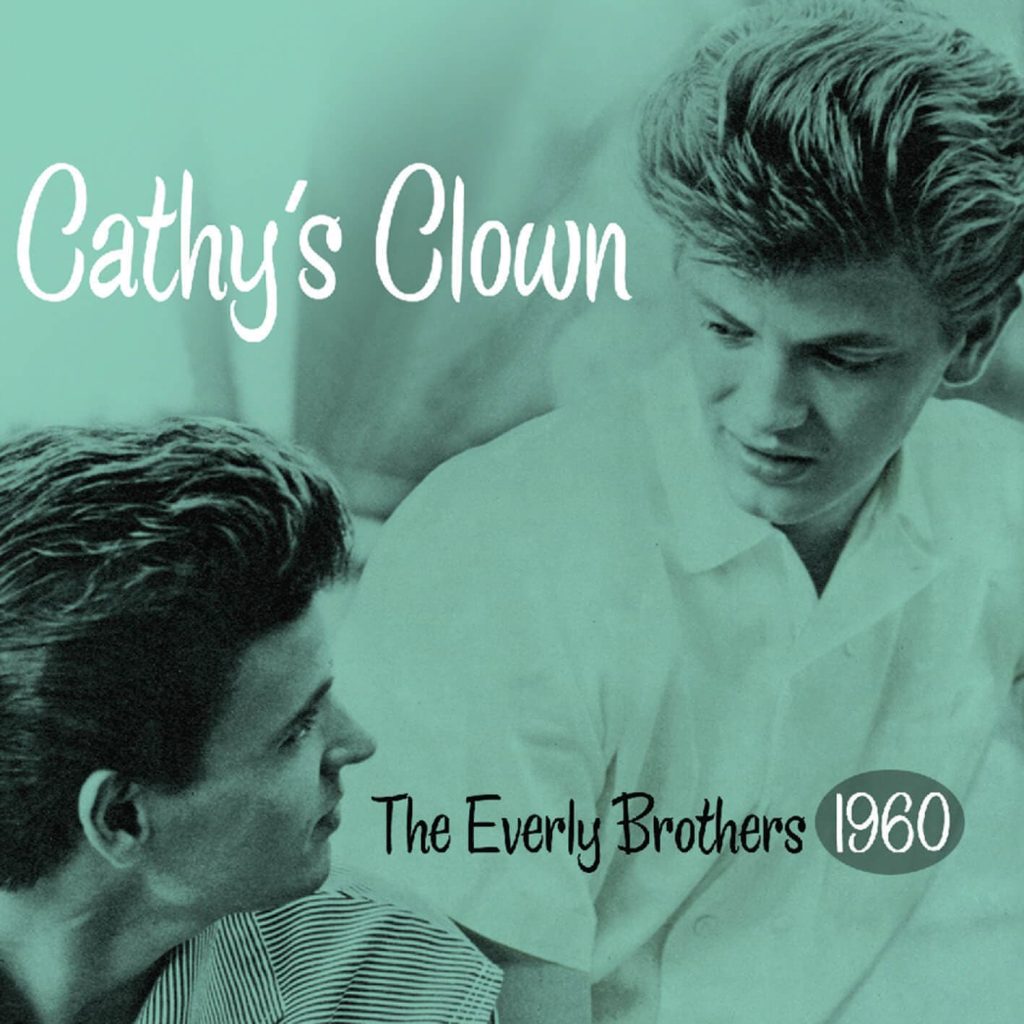
The Everly Brothers – “Cathy’s Clown”: A Heartbreaking Tale of Love and Betrayal
The Everly Brothers’ “Cathy’s Clown” is a timeless pop classic that captures the emotional complexity of heartbreak and unrequited love. Released in 1960 as the duo’s first single for Warner Bros. Records, the song became a massive hit, topping the Billboard Hot 100 for five weeks and reaching No. 1 on the UK Singles Chart, where it stayed for seven weeks. Written by Don Everly, the track is a masterful blend of emotional storytelling, lush harmonies, and innovative production, making it one of The Everly Brothers’ most iconic and influential songs.
The song begins with a dramatic drumbeat that immediately grabs the listener’s attention, setting the stage for the emotional weight of the lyrics. This rhythmic opening transitions into the duo’s signature close harmonies, which are layered over a rich blend of guitars and subtle orchestration. The arrangement strikes a perfect balance between simplicity and sophistication, ensuring that the song’s heartfelt message remains front and center.
Lyrically, “Cathy’s Clown” tells the story of a man who feels humiliated and heartbroken after discovering that his love, Cathy, has betrayed him. Lines like “Don’t want your love anymore / Don’t want your kisses, that’s for sure” capture the narrator’s pain and resolve as he struggles to come to terms with the end of the relationship. The lyrics are straightforward yet poignant, resonating with anyone who has experienced the sting of rejection.
The chorus, “Don’t want to be your fool, Cathy’s clown,” is both memorable and emotionally charged. The repetition of this refrain underscores the narrator’s determination to move on, while the harmonies add a layer of depth and vulnerability. The chorus serves as the emotional centerpiece of the song, encapsulating its themes of heartbreak and self-respect.
The Everly Brothers’ vocal performance is a highlight of “Cathy’s Clown.” Their harmonies are seamless and evocative, conveying a mix of sorrow, anger, and defiance. Don Everly’s lead vocals are filled with raw emotion, while Phil Everly’s harmonies provide a sense of unity and support, enhancing the song’s overall impact. Their vocal interplay, a hallmark of their style, adds a layer of complexity and richness that elevates the track beyond a typical breakup song.
The production, overseen by Wesley Rose and The Everly Brothers, is polished and innovative. The use of dual guitars and a prominent drumbeat gives the song a distinctive sound that set it apart from other pop hits of the era. The blend of rock and roll energy with pop sensibility showcases The Everly Brothers’ ability to push the boundaries of genre while maintaining a broad appeal.
Since its release, “Cathy’s Clown” has been celebrated as one of the defining tracks of the early 1960s. Its themes of love, betrayal, and resilience have made it a favorite for listeners across generations. The song’s influence can be heard in the works of artists like The Beatles, Simon & Garfunkel, and The Beach Boys, who admired The Everly Brothers’ harmonies and songwriting.
“Cathy’s Clown” has been covered by numerous artists, including Reba McEntire, whose 1989 rendition topped the Billboard Hot Country Songs chart, demonstrating the song’s enduring versatility and appeal. Despite these adaptations, The Everly Brothers’ original version remains definitive, capturing the raw emotion and musical innovation that made it a classic.
In the end, “Cathy’s Clown” is more than just a breakup song—it’s a deeply emotional exploration of heartbreak, dignity, and the complexities of love. The Everly Brothers’ heartfelt performance, combined with the song’s innovative production and timeless lyrics, creates a track that continues to resonate with audiences. For fans of classic pop and those who appreciate music that speaks to the heart, “Cathy’s Clown” is an unforgettable masterpiece.